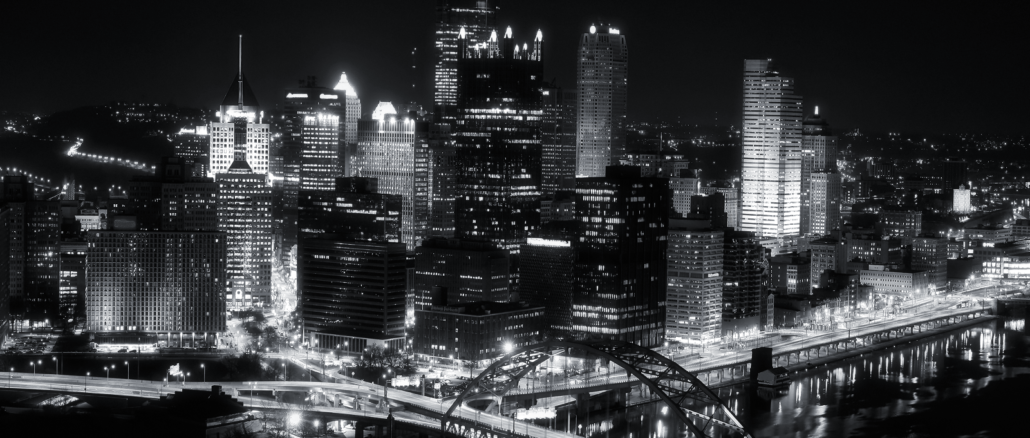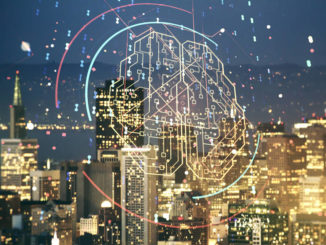
Commissioned: After two years of collective confinement, the world’s population rushed outdoors with a passion. People want to go further, faster, to more places: to work, on vacation, to see the world, do more, be more, see more. However, this resurgence in mobility comes at a cost. Estmates indicate that traffic levels are back to pre-COVID levels in many cities around the world and in some cases even higher. Drivers in some of the world’s largest cities are spending hundreds of extra hours and thousands of extra dollars sitting in unrelenting traffic, according to a report published by Bloomberg last year.
Post-pandemic traffic patterns have changed dramatically. For example, many people stopped using public transportation during COVID and now prefer the convenience of having their own vehicles. Many people also changed their shopping habits and continue to prefer front door delivery, increasing the number of delivery trucks on the roads. And while the shift to remote and hybrid work has somewhat lessened traffic during traditional commuter hours, it has also made traffic patterns less predictable than in the past. These new traffic patterns put stress on legacy traffic management systems, leading to congestion that wastes people’s time, creates excess carbon emissions and increases the chance for accidents.
And it’s not just cars, trucks and buses on the roadways. In many cities, pedestrian traffic is a critical element of the equation. For example, Japan’s Shibuya Crossing is the world’s busiest pedestrian crossing, where more than two million people intersect with Tokyo traffic every day. Roughly 2,500 pedestrians brave the four-way crossing every time the light changes, in a frenzy dubbed “the Shibuya Scramble.” The Japanese tourism bureau describes the crossing as walking the line “between manic chaos and perfect synchronization.”
Adding to the problems, cities are often stretched physically and financially, with limited resources to accommodate more people in less space. In this atmosphere, city planners are faced with the monumental task of delivering solutions to ease congestion, reduce carbon emissions and protect the safety of citizens as they move from place to place. In many cases, they must start from scratch because the old models don’t apply any more.
Traffic reduction approaches around the world
Cities around the world have taken on the task of reducing cars on the road, using various tactics to discourage private vehicles. For example, Paris has been continuously inhabited for thousands of years, weaving together the ancient and the modern with a maze of streets, some dating back as far as 2000 BC. The city has announced ambitious plans to become one of the most cycling-friendly places in Europe. To help ease traffic, city planners are working toward permanent, segregated bicycle lanes and adding 180,000 more bike parking spots.1
London is another ancient European city fighting traffic and the accompanying air pollution. The city is expanding its Ultra Low Emissions Zone (ULEZ) to include the entire city. Owners of older cars with higher emissions will have to pay a daily fee to drive anywhere in London.1
In Tokyo, walking and public transport are the two most popular forms of travel, followed by cycling. Tokyo has the lowest car use in the world, and for good reason, suggest reports. Officials have made owning a car in Tokyo difficult and expensive. Parking on the street is not allowed, and car owners must pay sales taxes, annual taxes and bi-annual inspection fees to own a car.
Another strategy for reducing cars on the road is to charge higher fees for parking in busy areas or make it available to residents only. Putting more parking spaces near public transportation, providing more and better public transportation options and encouraging carpooling and ride sharing can further reduce road congestion by providing convenient alternatives to driving.
These non-technical approaches to discouraging the use of private cars can be effective, but they can only go so far to reduce traffic congestion. Adding smart traffic management techniques, powered by AI, can help streamline the remaining traffic to make the roads faster and safer for everyone.
City planning is the next digital transformation frontier
City planning, and especially traffic management, as an area that is ripe for technological innovation. The ability of AI to crunch vast amounts of data both for predictive modeling and real-time response to any changes in predicted behavior makes it ideal for tackling traffic management. And the availability of edge computing with the immense processing power required for AI is creating a catalyst for smart digital cities right now.
AI at the edge can improve outcomes in developing nations and the developed world alike. It can be applied successfully in established cities with aging infrastructure and fast-growing cities struggling to accommodate increasing populations. It is especially powerful when incorporated into visionary planned cities – like Toyota Woven City and Neom (details of both can be found below) – that are being built from scratch with the elimination of traffic congestion a top priority.
Even though the strategies are diverse, depending on the individual characteristics of the cities, they have one thing in common. They rely on advanced technologies capable of collecting and analyzing data at the edge to streamline traffic, detect potential hazards and enhance safety for citizens.
Smarter traffic management
Using data from Internet of Things (IoT) sensors, cameras and GPS devices can revolutionize traffic management. Integrating IoT data helps cities make data-driven decisions that optimize traffic flow to reduce delays and congestion and improve sustainability and quality of life in urban areas. For example, LYT is an intelligent traffic solution provider that helps cities create connected networks of traffic signals that can communicate in real time. AI-enabled technologies such as transit signal priority and emergency vehicle preemption adjust traffic signals in real-time based on changes in traffic conditions, the company says.
IoT data can also be used to provide real-time information to drivers about alternate routes that may be less crowded, encouraging drivers to spread out and ease the pressure on major routes. Adaptive traffic signals can use real-time data to adjust timing based on actual traffic patterns, and a technology called vehicle-to-infrastructure (V2I) allows vehicles to communicate directly with roadway infrastructure to better coordinate and control traffic flows.
Smarter road safety and sustainability
In addition to shortening drive times, smart traffic solutions can also increase road safety. AI-based technologies such as smart intersection management, red light enforcement, automatic violation enforcement and driving behavior analytics can improve driving conditions and reduce accidents.
For example, many Japanese cities use IoT and AI to prevent accidents, including such innovations as accident detection for autonomous vehicles and smart streetlamps. Other cities around the world use data about previous accidents to proactively identify hazards, predict where and when accidents are likely to happen and remediate contributing factors.
Bad traffic doesn’t just lead to wasted productivity and accidents. It increases carbon emissions as thousands of vehicles idle on congested roadways. Smart cities around the world are actively using AI to reduce air pollution and improve air quality.
Google is pioneering the use of AI to reduce traffic pollution using a variety of tactics. AI-driven smart traffic signals use real-time traffic data to minimize idle time and reduce carbon emissions. AI algorithms are also used to analyze historical and real-time traffic data, combined with other data points to predict traffic hot spots, and reroute traffic to prevent gridlock. Google Maps even offers drivers the option to choose routes that are more environmentally friendly or that have better air quality.
Other companies are working on innovative air quality management solutions for smart cities worldwide. Swisens, AirLib, City Air, PurCity and Clenare are among the top startups developing air quality monitoring, data analytics and air purification solutions, according to a recent research blog.
Smarter from the start
A new generation of planned cities is giving visionaries the opportunity to integrate AI-driven smart city technologies from the start. The Toyota Woven City is being touted by the company as “a test course for mobility to create the basis for the future fabric of life.” Slated to complete phase one in the summer of 2024, the Japanese city will feature multiple types of above- and below-ground transportation pathways to optimize movement of people and goods throughout the city. At street level, there will be separate pathways for automated mobility, personal mobility and pedestrians. There will be a fourth pathway below ground for commercial deliveries and the city’s logistics network.
In Saudi Arabia, Neom is a $500 billion project addressing “some of the most pressing challenges facing humanity by…reimagining what a sustainable future will look like in 20 to 30 years and building it today.” THE LINE is the project’s first endeavor, a “cognitive city” that will run on 100 percent renewable energy with no roads, cars or emissions. The city’s automated services will be powered by AI. All daily essentials will be accessible within a five-minute walk, and a high-speed rail will traverse the city end-to-end in just 20 minutes. THE LINE will eventually accommodate 9 million people in a footprint of just 34 square kilometers for a reduced infrastructure footprint and unheard-of efficiencies for city functions.
Start planning smart today
Unprecedented advances in the field of AI coupled with the increasing availability and economies of scale for powerful compute suitable for edge deployment are making smart city technologies viable across geographies. As an essential element of the march of human progress, AI at the edge can help make mobility more efficient, safe and sustainable.
For more information and ideas on smart cities, visit Dell digital cites of the future.
Contributed by Dell Technologies.



Be the first to comment